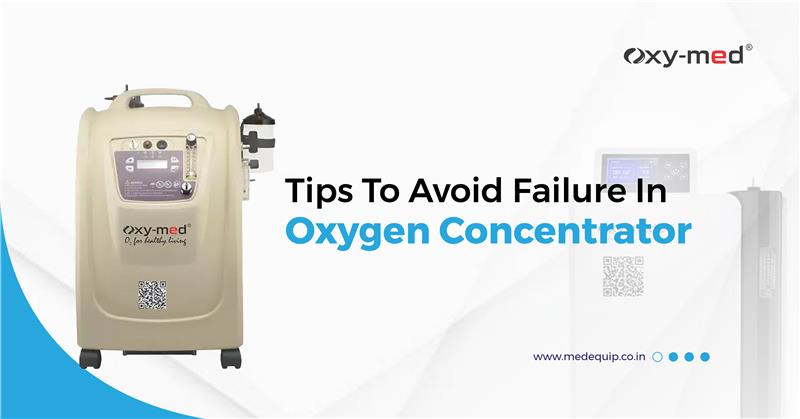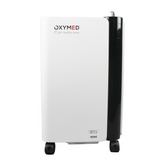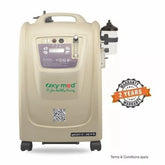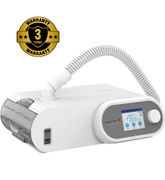Tips To Avoid Failure In Oxygen Concentrator
An oxygen concentrator, like any other equipment you have used, gradually could stop functioning properly and efficiently either to technical problems or due it’s age. There may also be instances where the Oxygen Concentrator is working well but something outside of the concentrator causes it to malfunction.
The Oxygen Concentrator may stop producing oxygen for a number of reasons. An oxygen concentrator's system is built out of a variety of advanced technologies that work together to purify and produce medical-grade oxygen so that you can breathe it in conveniently with comfort.
It is advised that the user to check and verify whether if they can solve the device’s problem without hiring a maintenance professional, the user can diagnose and straighten the issue using self-help and troubleshooting methods from the User Manual.
Safety Recommendations
The user must read and understand the safety protocols listed below before troubleshooting it by themselves. Switch to an alternative oxygen source while troubleshooting the oxygen concentrator. Keeping a backup oxygen supply in case of emergencies or power outages is strongly advised by oxygen concentrator manufacturers.
-
Never disassemble the device yourself. The device's warranty could be voided, and it might jeopardise consumer safety.
-
Remove the device from any sources of heat, smoke, or pollution.
-
To avoid accidental spills, keep the device away from liquids or water.
Troubleshooting Oxygen Concentrator
Oxygen concentrator devices are trustworthy, reliable, and cost-effective devices that are used to treat patients with COPD and other respiratory conditions. Oxygen concentrators rarely encounter problems or unresolved problems. If a device develops issues, oxygen patients and their caregivers can consider a variety of quick fixes.
If there is a green light next to the power switch, your oxygen concentrator is operating properly. The red and yellow warning lights on the device remain on for 10 to 15 minutes after turning it on. This does not necessarily imply that the device is damaged, broken or malfunctioning.
Power Issues
If the device won't turn on or there are no visible indicator lights:
-
Make sure the device is plugged into a reliable power source.
-
Confirm whether the outlet is connected to an outlet that may have been off if it is plugged in. Try to plug the Oxygen concentrator into a different outlet will allow you to see whether it will turn on again.
-
It is best recommended to connect the device directly to a wall outlet rather than through an extension cord or power strip.
-
An ongoing alert will play in the event of a power outage. Both the emergency cylinder and the concentrator should be turned on at that time.
Low Output or No Output
Check the following if you feel that you are not receiving the recommended amount of oxygen or if the device is not producing any oxygen at all:
-
Make sure the tubing is securely fastened to the device.
-
Check the tubing for any kinks or knots.
-
In order to avoid leaks when humidification is used, make sure the humidifier bottle cap is tightened on firmly and isn't cross-threaded.
Visibility of Warning Lights & Audible Alarm
If the red light is flashing, a timely alarm is buzzing, or if the yellow indicator light is on continuously, do the following safety instructions:
-
Ensure there are no kinks or knots in the tubing.
-
If the oxygen flow meter is too low or too high, you may turn the meter knob to the suggested setting.
-
In order to allow free airflow to enter the Oxygen Concentrator and prevent overheating, make sure the unit is 6 to 8 inches away from any barrier like furniture or walls.
Humidifier Bottle Malfunction
Some patients will require a humidification bottle since oxygen therapy might dry up the sinus passages. If tap water is used instead of the recommended distilled water, the humidifier bubbler tube could occasionally become clogged with tap water minerals. This can cause the humidifier to break down. Change or swap out the humidifier bottle occasionally. Filling the humidifier container should only be done with refined, clean, and safe water.
Related Products
-
Oxygen Concentrator Mini - 5 LPMThe Oxymed Oxygen Concentrator Mini - 5 LPM is a compact and easy-to-use oxygen delivery system designed for general wellness applications in home environments. With a flow capacity of up to 5 litres per minute, it provides adjustable oxygen enrichment for personal use. Its...
- ₹ 36,900.00
₹ 65,990.00- ₹ 36,900.00
- Unit price
- / per
-
Oxygen Concentrator Mini - 10 LtrThe Oxymed Oxygen Concentrator Mini - 10 Ltr is a powerful, efficient, and medical-grade oxygen delivery solution designed for individuals requiring high-flow oxygen therapy. Engineered with advanced technology, this device ensures a steady and uninterrupted supply of oxygen, making it ideal for home and...
- ₹ 52,000.00
₹ 118,990.00- ₹ 52,000.00
- Unit price
- / per
-
Portable Oxygen Concentrator P2The Oxymed Battery-Powered Portable Oxygen Concentrator P2 is a lightweight, travel-friendly device designed for individuals who need oxygen therapy on the go. With pulse dose technology, it provides efficient oxygen delivery while ensuring maximum mobility. Whether at home, traveling, or outdoors, this concentrator offers uninterrupted...
- ₹ 137,900.00
₹ 219,990.00- ₹ 137,900.00
- Unit price
- / per
-
Pulse OximeterThe Oxymed Pulse Oximeter is a compact, user-friendly device designed to accurately measure blood oxygen levels (SpO2) and pulse rate, providing critical insights into your respiratory health. Ideal for individuals with respiratory conditions, athletes, or anyone monitoring their health, this pulse oximeter allows for...
- ₹ 1,500.00
₹ 1,890.00- ₹ 1,500.00
- Unit price
- / per
-
Hepa NebulizerThe Oxymed HEPA Nebulizer is a high-performance respiratory device designed to provide effective treatment for respiratory conditions such as asthma, chronic obstructive pulmonary disease (COPD), and other pulmonary diseases. Featuring advanced HEPA filtration, this nebulizer ensures the delivery of clean, purified air during treatments,...
- ₹ 1,980.00
₹ 2,200.00- ₹ 1,980.00
- Unit price
- / per
-
Ultra NebulizerThe Oxymed Ultra Nebulizer is a cutting-edge device designed to provide fast, efficient, and comfortable nebulization therapy for individuals with respiratory conditions such as asthma, COPD, and bronchitis. Engineered with advanced technology, this nebulizer delivers medication in fine mist form, allowing for better absorption...
- ₹ 2,190.00
₹ 2,300.00- ₹ 2,190.00
- Unit price
- / per
-
Auto CPAP - Sleep EasyThe Oxymed Auto CPAP - Sleep Easy Machine is a user-focused breathing support device designed to promote consistent airflow during rest. Combining smart features with ease of use, it supports a more restful breathing experience. The device auto-adjusts airflow based on user patterns, making...
- ₹ 31,900.00
₹ 60,990.00- ₹ 31,900.00
- Unit price
- / per
-
Oxymed Suction MachineThe Oxymed Suction Machine is a reliable and high-performance device designed for efficient suctioning of fluids, secretions, and mucus from the airway. Perfect for medical facilities, home care, and emergency use, this suction machine is ideal for patients who need assistance with respiratory clearance,...
- ₹ 7,499.00
₹ 8,315.00- ₹ 7,499.00
- Unit price
- / per













